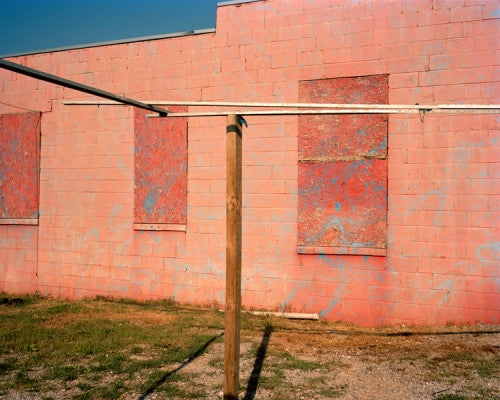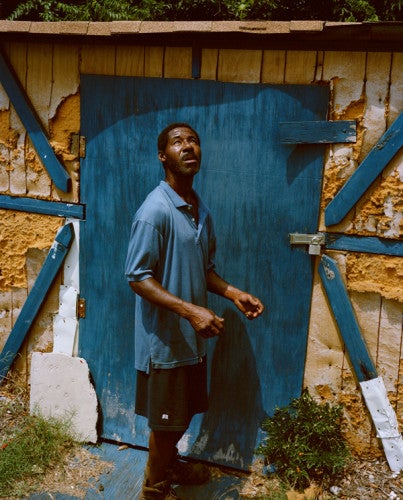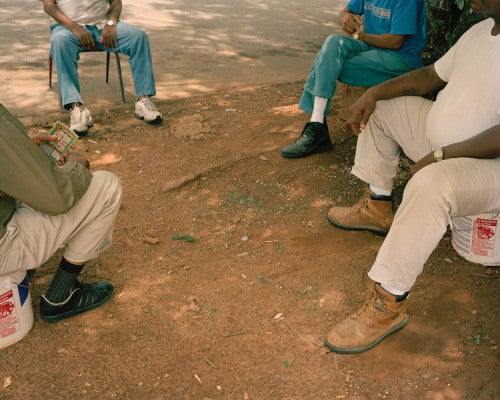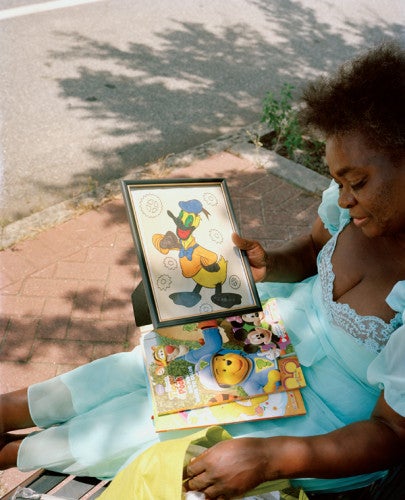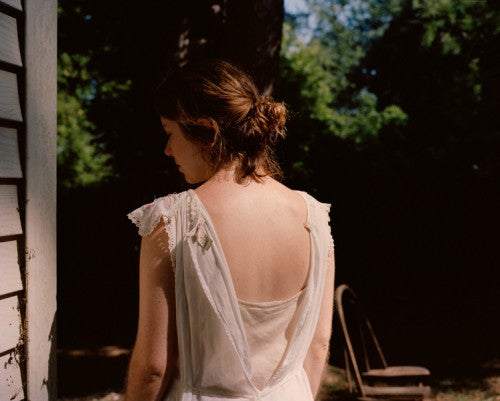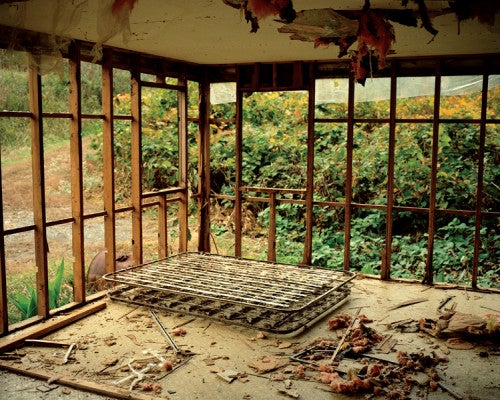Over the past five years, New York-based photographer Joe Leavenworth has documented his intermittent travels throughout Georgia and the American South, and Native Son—published by the Brooklyn-based VUU this past January—compiles a selection of these photographs. Rich and colorful, Leavenworth’s images, taken between 2009 and 2012, are steeped in the dusty light of Southern summers. Like William Eggleston—whose influence is supremely evident in this collection—Leavenworth highlights the textures, colors, and objects of everyday life, using his camera to reexamine the ordinary.
Unlike many so-called travel photographers, Leavenworth is less interested in creating a purportedly encyclopedic portrait of the areas he visits and the people he meets. Instead, his work sits at a unique intersection of sociology and personal history, uncovering aspects of his own and others’ pasts through his travels and his work.
Raised in Woodbury, Connecticut, Leavenworth’s interest in the South stems from his being adopted, directly after birth, from a woman in Decatur, Georgia. He knew of his Southern roots from a young age, but he visited Georgia for the first time as an adult, in 2009, to try to understand better a region that seemed completely foreign to him and his upbringing. His journey has not been fueled by a hackneyed sense of self-discovery but rather a curiosity about the rural parts of our country that are often dismissed and stereotyped by the mainstream media.
Looking at Leavenworth’s photos, one can’t help but think about Chantal Akerman’s 1999 film Sud. Akerman had planned to film a poetic meditation on the American South, but her documentary quickly changed focus after the racially motivated murder of James Byrd, Jr., in Jasper, Texas. Akerman’s matter-of-factstyle depicts the social and political wounds of this menacing hate crime, interviewing local residents and documenting the economic and socio-political changes in the area.
Though Akerman gained access to the intimate moments of Byrd’s funeral service, her film is pervaded by an extreme sense of foreignness, and Akerman—with her video camera and high-art sensibility—is unable to break into the culture of Jasper and its surroundings. Long, elegantly panning shots depict locals staring and pointing at her, seemingly skeptical of her intentions, disconnected from the cultural framework in which she’s working. The South seems to flip the othering gaze of the camera onto Akerman and the viewer, giving her film an added poignance and sense of desperation.
Leavenworth has seemingly embraced his status as a foreigner, using photography as a tool to begin to comprehend the unfamiliar. Each individual photo feels like an introduction, and Native Son skims the surface of one particular type of life in the rural South, without letting Leavenworth fully enter its confines.
In his photographs, Leavenworth avoids the monumental and the touristy in favor of the seemingly forgotten. His attention drifts toward architecture, depicting clapboard siding in disrepair and pyramids of cinder blocks at a construction site. His photographs show sites in flux, depicting the economic turmoil that still haunts much of the region. Leavenworth highlights the textural beauty of chipping paint and the patina of dirt and sun, creating a landscape for the striking portraits that comprise the bulk of Native Son.
Leavenworth uses photography as a way of introducing himself to people, listening to their stories and impressions before bringing out his camera. He met a woman named Antoinette in Atlanta’s Kirkwood neighborhood while she was furiously coloring images of Donald Duck and Care Bears to decorate the room of her niece. Albertisha, photographed in Charleston, is a model, and her pose and defensive gaze wouldn’t be out of place on any number of street-style blogs. A man named Mad Dawg bends over to cut the side of his friend’s hair on the sidewalk. A group of men sit in a circle, talking, while one holds a lottery ticket. Leavenworth has been in touch with many of his subjects since returning to New York, but these stories and individual introductions are hidden from the viewer, lending the photographs a sense of mystery between subject, photographer, and viewer.
Leavenworth’s title, appropriated from Richard Wright’s iconic novel, emphasizes his attempt to comprehend and relate to a culture that is not inherently his own (Leavenworth is white and grew up in a small New England town). He first read Wright’s book in high school and was profoundly impacted by its discussion of race and class. Through Wright’s text, Leavenworth began to examine his own relationship to the United States’s history of racial inequality, which is deeply rooted in the economic and social history of the South. Native Son reflects his attempts to draw connections between disparate histories and backgrounds but avoids overt political messages. His photos perhaps don’t hold the weight of such a historically charged title.
At bottom, Leavenworth’s Native Son is a sumptuous elegy to the often overlooked parts of the country and a document of his own evolving relationship with the South and its history. His photographs ask us to draw our own connections between North and South, urban and rural, and new and old.
Charlie Tatum is an arts worker currently based in New Orleans. He received a BA in art history from New York University in 2011 and published HEJ: a print-curatorial project with Dana Kopel. Originally from Greenville, South Carolina, he has recently moved back to the South after nearly seven years in New York. He is currently working as education and visitor services associate for Prospect New Orleans.

